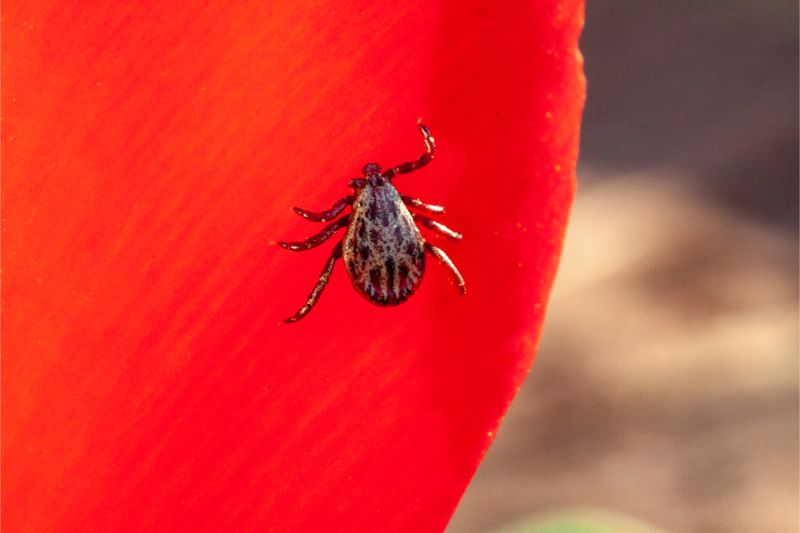Why You Never Want to See a Tick on Your Pet

We were lucky to have such a beautiful, mild winter this past year, but we’ll be paying for it throughout the summer. Without freezing temperatures, ticks were given a second chance to wreak havoc on our community, and experts are predicting that this year could be one of our state’s worst tick seasons.
Finding a tick on your pet is never fun, but with our go-to tips for prevention we hope you’ll never experience it.
Getting a Grip
Mild winters mean that plenty of hosts abound for year-round parasites. Vector-borne diseases spread by ticks, fleas and mosquitoes continue to threaten animal welfare even in areas that do experience extremes in the weather. For us, the warmth and humidity create happy habitats for these blood-suckers – but not if we can help it.
Tick Life-Cycle
Usually the first frost kills off adult ticks and any eggs. However, without freezing temperatures, eggs can develop into the larval stage. From there, it can take up to three years between the eight-legged nymph stage and adulthood. But because they need a blood meal in order to “graduate” into the next life stage, ticks often die before they can feed.
Not In My Backyard!
Ticks can be found anywhere in the outdoors, but they prefer overgrown, grassy areas, or heavily shaded, wooded areas. Because of their heightened proliferation this year, be sure to trim back any growth on your property. Remember, they don’t fly or jump; instead, they attach themselves to plants and wait for prey to walk by.
Also, install fencing to reduce tick-harboring wildlife, rodents, or other mammals, from entering your yard and dropping ticks off to feed on your pet.
Spotting a Tick On Your Pet
Since most ticks are pretty small, it can be difficult to spot a tick on your pet with the naked eye. That being said, it’s a good practice to rub your pet down after they spent any time outside. Check their legs, abdomen, chest, neck, ears, and tail for any small bump on their skin.
Dangers of Lyme Disease
The dangers of Lyme disease are well known, such as possible kidney failure, or issues with the heart or brain. Responsible for certain problems in specific organs, the bacteria that causes Lyme disease also causes serious joint pain, swelling, fever, lameness, and overall illness.
If your pet’s lifestyle is an active one, it may be best to protect them with the Lyme disease vaccination. Otherwise, keeping them on a year-round schedule of parasite prevention can go a long way toward killing ticks that attach themselves. At Animal Medical Hospital & Urgent Care, we stock a variety of high-quality preventives that are custom-prescribed for your pet’s individual needs.
Tick Removal
If you see a tick on your pet, stay calm. It can take up to 2 days for the Lyme disease bacteria to be transmitted into their bloodstream. The following tips aim to help you with quick tick removal:
- A good pair of tweezers will have fine points, not flat, blunt tips.
- You don’t want to risk tearing the tick, or leaving part of it inside the surface layer of skin. Spread the fur and grasp the tick as close as you can to your pet’s skin.
- Gently, but steadily, pull the tick out in a slow, straight motion.
- Place the tick in a sealed container.
- Wipe the bite site with rubbing alcohol.
- Wash your hands and the tweezers with hot water and soap.
If you have further questions about the year-round threats of ticks and other parasites, we encourage you to contact us. Our team is always here to help!
